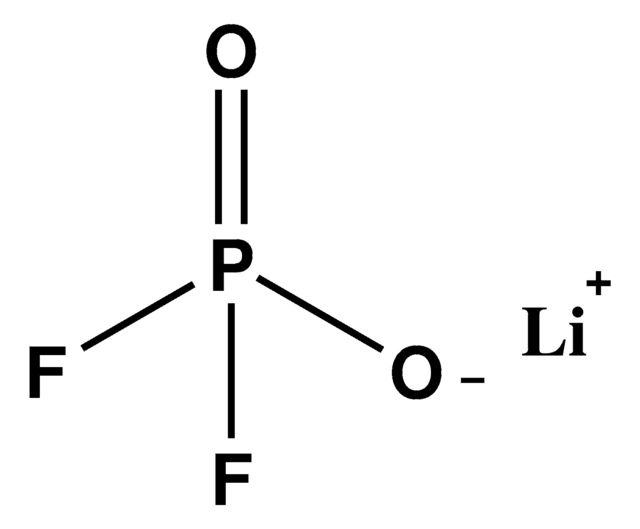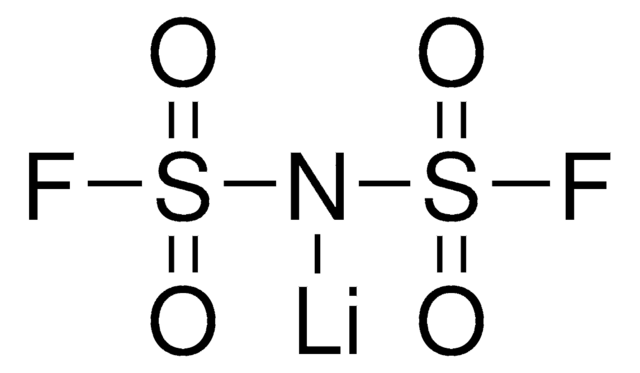757136
Lithium bis(oxalato)borate
Sinónimos:
LiBOB, Lithium bis(ethanedioato)borate, Lithium bis(oxalate)borate
About This Item
Productos recomendados
Formulario
powder or crystals
características de los productos alternativos más sostenibles
Design for Energy Efficiency
Learn more about the Principles of Green Chemistry.
sustainability
Greener Alternative Product
mp
>300 °C (lit.)
aplicaciones
battery manufacturing
categoría alternativa más sostenible
cadena SMILES
[Li+].O=C1O[B-]2(OC1=O)OC(=O)C(=O)O2
InChI
1S/C4BO8.Li/c6-1-2(7)11-5(10-1)12-3(8)4(9)13-5;/q-1;+1
Clave InChI
NVQAYVUCVASGDK-UHFFFAOYSA-N
¿Está buscando productos similares? Visita Guía de comparación de productos
Descripción general
Aplicación
Información legal
Producto relacionado
Palabra de señalización
Danger
Frases de peligro
Consejos de prudencia
Clasificaciones de peligro
Acute Tox. 4 Oral - Eye Dam. 1 - Skin Sens. 1A
Código de clase de almacenamiento
13 - Non Combustible Solids
Clase de riesgo para el agua (WGK)
WGK 1
Elija entre una de las versiones más recientes:
¿Ya tiene este producto?
Encuentre la documentación para los productos que ha comprado recientemente en la Biblioteca de documentos.
Los clientes también vieron
Artículos
Solid-state Li batteries: Review of solid electrolytes, ion conduction, structures, and electrochemical processes.
Solid oxide fuel cells and electrolyzers show potential for chemical-to-electrical energy conversion, despite early development stages.
Li-ion batteries are currently the focus of numerous research efforts with applications designed to reduce carbon-based emissions and improve energy storage capabilities.
Lithium-ion batteries offer high energy density and cyclic performance for portable electronic devices.
Nuestro equipo de científicos tiene experiencia en todas las áreas de investigación: Ciencias de la vida, Ciencia de los materiales, Síntesis química, Cromatografía, Analítica y muchas otras.
Póngase en contacto con el Servicio técnico













